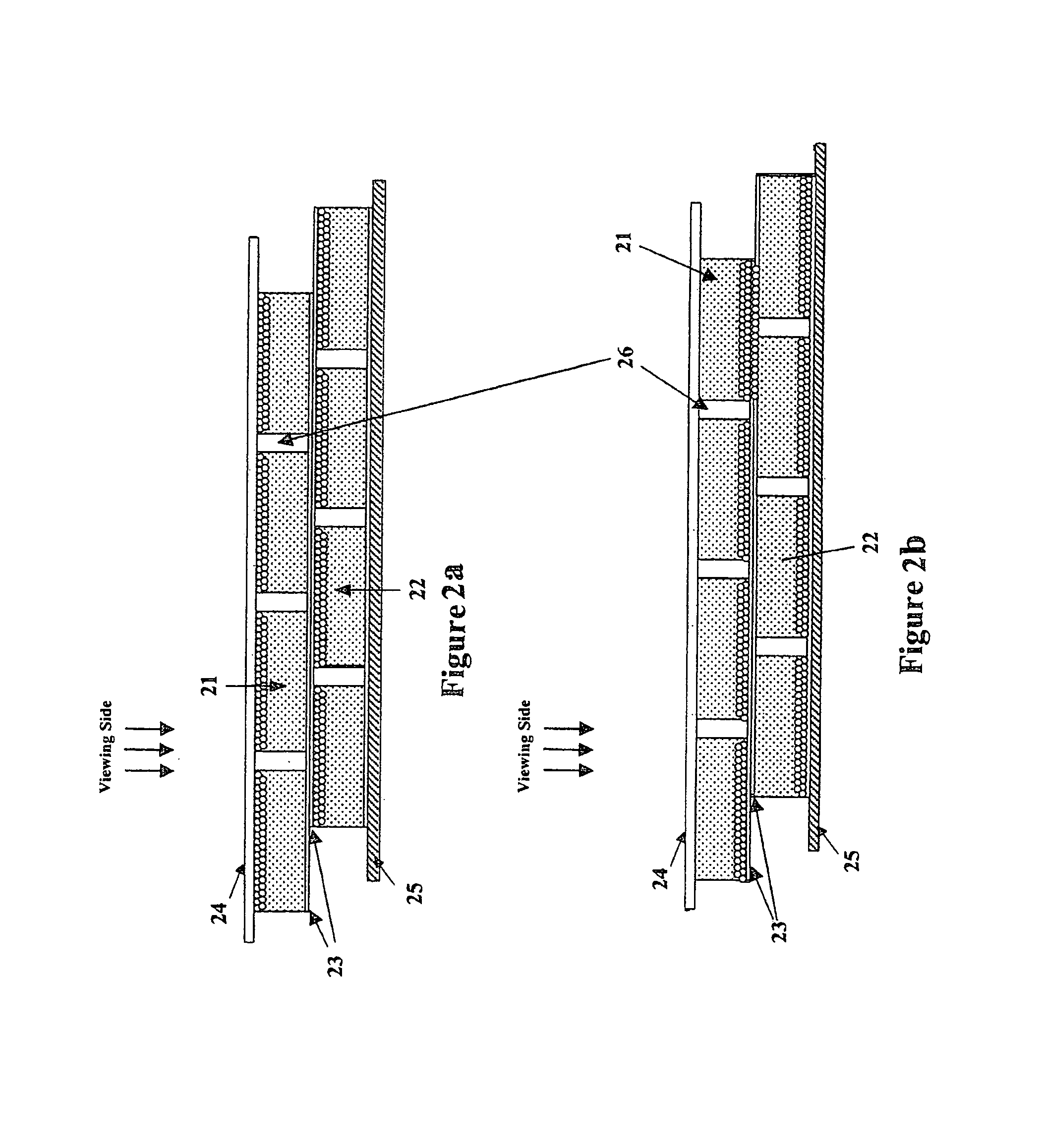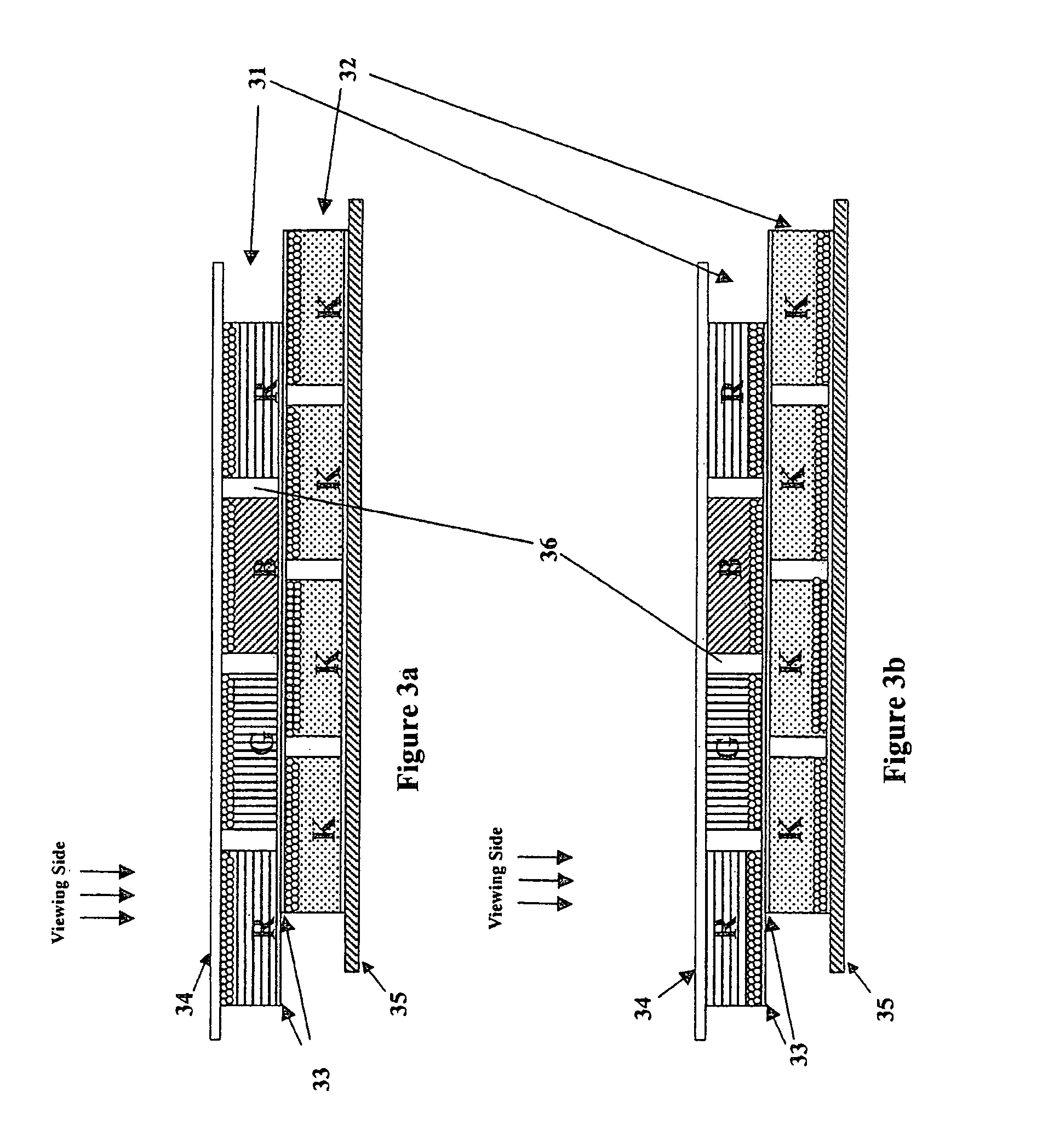Composition and process for the manufacture of an improved electrophoretic display
- Summary
- Abstract
- Description
- Claims
- Application Information
AI Technical Summary
Benefits of technology
Problems solved by technology
Method used
Image
Examples
example 1
Microcup Formulation
[0078]35 Parts by weight of Ebecryl 600 (UCB), 40 parts of SR-399 (Sartomer), 10 parts of Ebecryl 4827 (UCB), 7 parts of Ebecryl 1360 (UCB), 8 parts of HDDA, (UCB), 0.05 parts of Irgacure 369 (Ciba Specialty Chemicals) and 0.01 parts of isopropyl thioxanthone (ITX from Aldrich) were mixed homogeneously and used for microembossing.
example 2
Preparation of Microcup Array
[0079]A primer solution comprising of 5 parts of Ebecryl 830, 2.6 parts of SR-399 (from Sartomer), 1.8 parts of Ebecryl 1701, 1 part of PMMA (Mw=350,000 from Aldrich), 0.5 parts of Irgacure 500 and 40 parts of methyl ethyl ketone (MEK) was coated onto a 2 mil 60 ohm / sq. ITO / PET film (from Sheldahl Inc., Minn.) using a #3 Myrad bar, dried and UV cured by using the Zeta 7410 (5 w / cm2, from Loctite) exposure unit for 15 minutes in air. The microcup formulation prepared in Example 1 was coated onto the treated ITO / PET film with a targeted thickness of about 50 μm, embossed with a Ni—Co male mold having a 60 (length)×60 (width) μm repetitive protrusion square pattern with 25–50 μm protrusion height and 10 μm wide partition lines, UV cured from the PET side for 20 seconds and removed from the mold with a 2″ peeling bar at a speed of about 4–5 ft / min. Well-defined microcups with depth ranging from 25 to 50 μm were prepared by using male molds having correspondi...
example 3
Pigment Dispersion
[0080]6.42 Grams of Ti Pure R706 were dispersed with a homogenizer into a solution containing 1.94 grams of Fluorolink D from Ausimont, 0.22 grams of Fluorolink 7004 also from Ausimont, 0.37 grams of a fluorinated copper phthalocyanine dye from 3M and 52.54 grams of perfluoro solvent HT-200 (Ausimont).
PUM
| Property | Measurement | Unit |
|---|---|---|
| Length | aaaaa | aaaaa |
| Length | aaaaa | aaaaa |
| Length | aaaaa | aaaaa |
Abstract
Description
Claims
Application Information
 Login to View More
Login to View More - R&D
- Intellectual Property
- Life Sciences
- Materials
- Tech Scout
- Unparalleled Data Quality
- Higher Quality Content
- 60% Fewer Hallucinations
Browse by: Latest US Patents, China's latest patents, Technical Efficacy Thesaurus, Application Domain, Technology Topic, Popular Technical Reports.
© 2025 PatSnap. All rights reserved.Legal|Privacy policy|Modern Slavery Act Transparency Statement|Sitemap|About US| Contact US: help@patsnap.com



